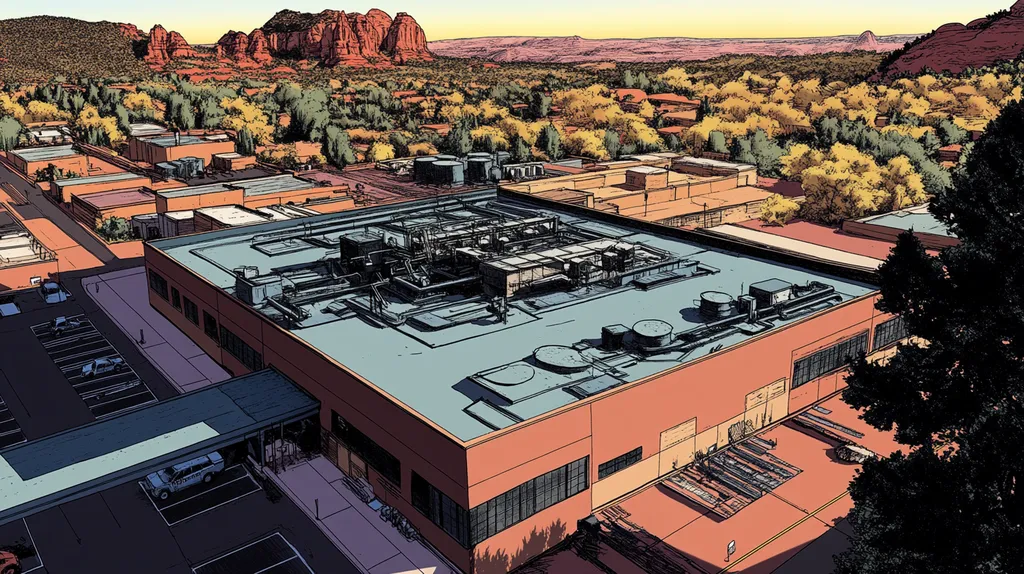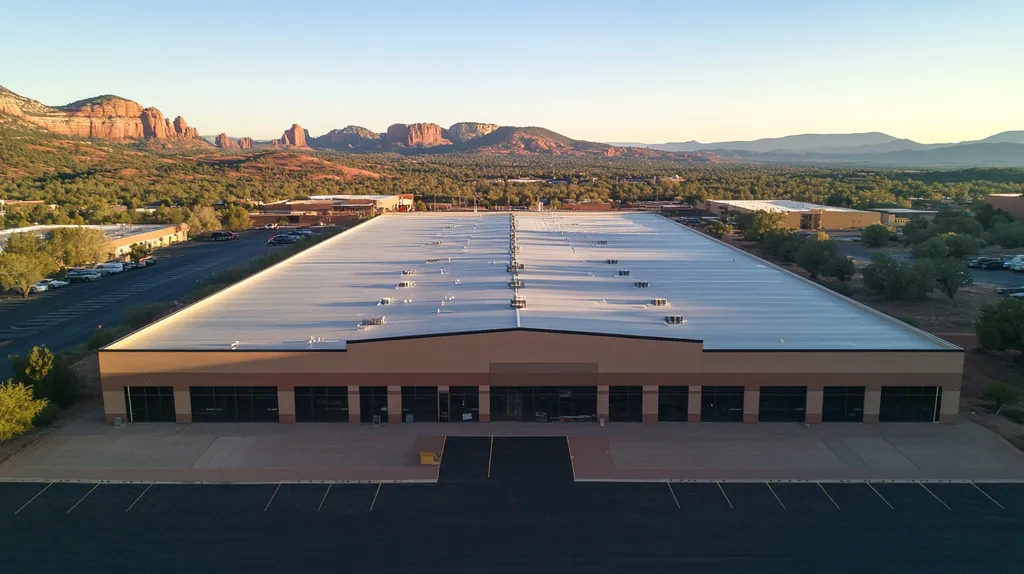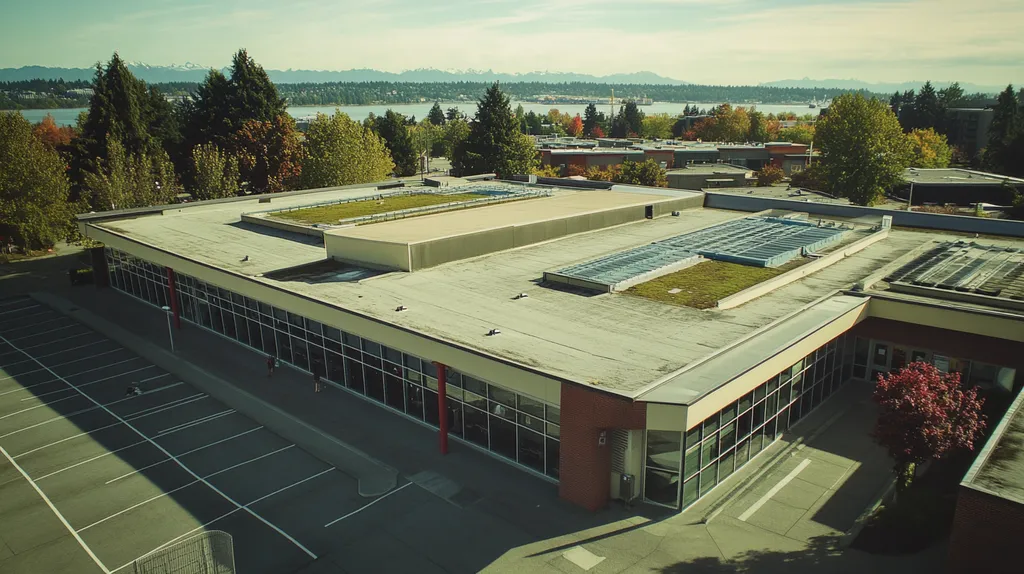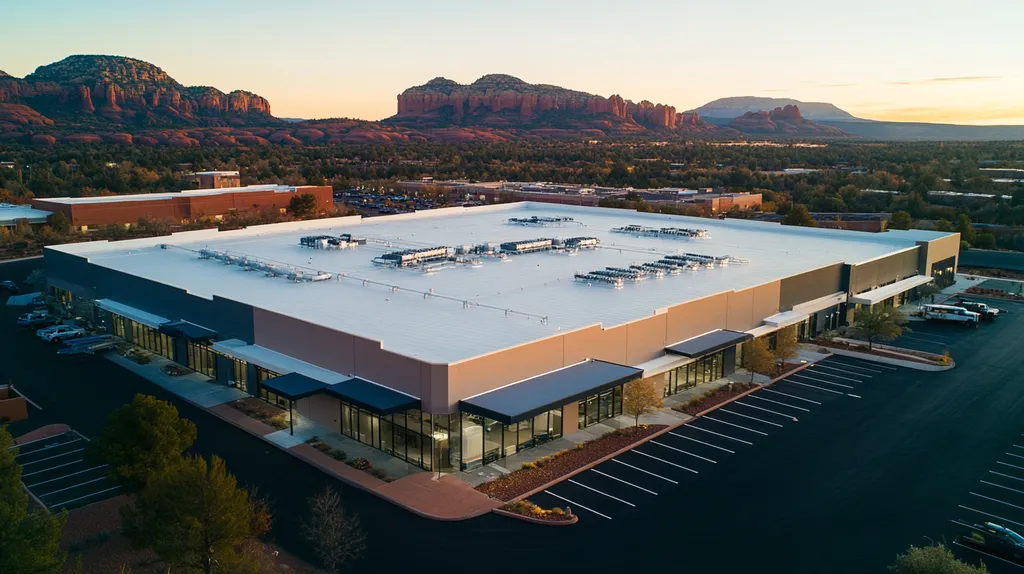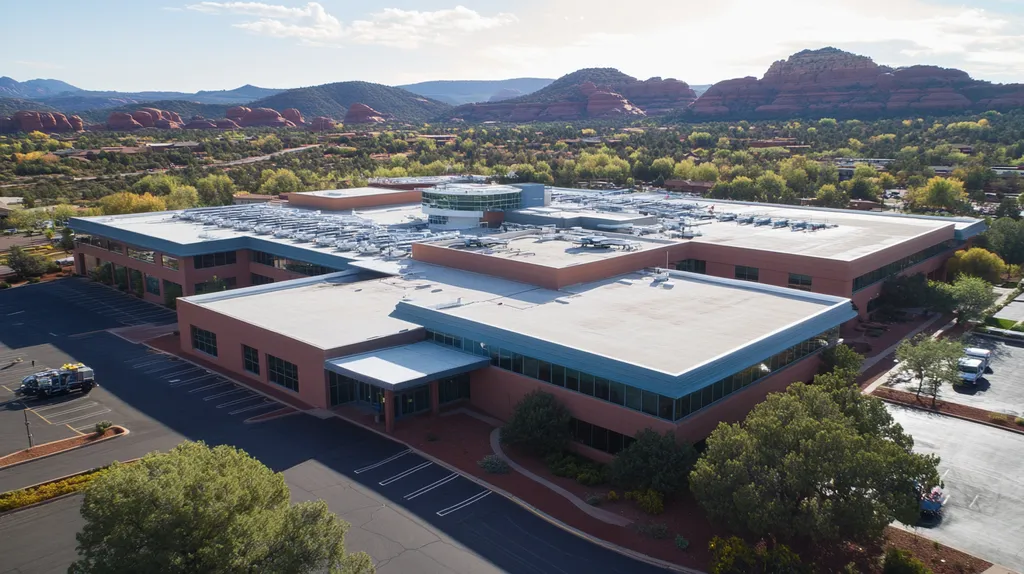Welcome to today’s Battle Royale featuring two roofing heavyweights: “Silicone Roof Coatings” in the east corner versus “Polyurethane Roof Coatings” in the west!
Tonight’s showdown pits these contenders against each other across six punishing rounds designed to test every aspect of their performance for Commercial Roof Coatings.
At stake? Millions in potential costs, decades of building protection, and the critical performance demands of modern commercial and industrial facilities.
Our professional judging panel will evaluate each round on technical merit, real-world performance, and value delivery. After all six rounds, we’ll declare our ultimate champion.
Ladies and gentlemen, facility managers and building owners… it’s time to rumble!
ROUND 1: INITIAL COSTS & INSTALLATION
When facing commercial roof coating decisions, property owners must carefully weigh initial investments against long-term performance. With restoration costs reaching up to 75% less than full replacement, choosing the right coating system becomes a critical business decision that impacts both immediate budgets and future maintenance cycles.
A well-planned coating project can extend roof life while providing substantial cost savings. However, the complexity of modern coating systems demands careful evaluation of materials, installation requirements, and project timing to achieve optimal results.
Material Expenses
A professional roof restoration using quality coatings can extend roof life for approximately 25% of replacement costs. This significant cost differential makes coating an attractive option for property owners seeking to maximize their maintenance budgets.
Silicone coatings typically command premium pricing, with costs ranging 20-30% higher than comparable polyurethane products. However, their single-coat application often reduces total material requirements and associated labor costs.
Polyurethane coatings offer lower upfront material costs but generally require multiple coats and primers. This multi-layer requirement can offset initial savings through increased material quantities and application time.
A well-timed professional restoration can double the life of existing roofs for a quarter of the cost of a full replacement. (source: Facilitiesnet)
For material expenses, ADVANTAGE goes to polyurethane roof coatings.
Installation Complexity
Installation requirements significantly impact project success and long-term performance. Silicone coatings offer simpler single-coat application protocols but demand precise surface preparation and weather conditions.
Polyurethane systems require multiple coating layers with specific cure times between applications. This complexity increases the potential for installation errors but allows better quality control throughout the process.
Both coating types need specialized equipment and trained applicators to ensure proper installation. However, silicone’s forgiving nature and simpler application process reduce the risk of installation failures.
For installation complexity, ADVANTAGE goes to silicone roof coatings.
Project Timeline
Project duration directly affects facility operations and overall costs. Silicone coatings typically complete in fewer steps, allowing faster project completion despite longer cure times between coats.
Polyurethane installations require multiple application phases, extending overall project timelines. However, each coat cures quickly, enabling continuous work progress in suitable weather conditions.
Weather sensitivity affects both systems, but silicone’s moisture tolerance allows more flexible installation scheduling. This advantage can significantly reduce weather-related delays and timeline extensions.
For project timeline, ADVANTAGE goes to silicone roof coatings.
ROUND 1 WINNER: SILICONE ROOF COATINGS
ROUND 2: DURABILITY & LIFESPAN
When evaluating commercial roof coatings, durability and lifespan directly impact both short-term facility operations and long-term financial planning. With roofing systems representing up to 30% of total building maintenance costs, selecting the right coating solution becomes a critical business decision.
Understanding how different coating materials perform over time helps facility managers make informed decisions that protect both their buildings and budgets. The Roof Condition Index (RCI) provides an objective framework for evaluating coating performance on a scale of 0-100, helping prioritize between repair, restoration, or replacement options.
Weather Resistance
Silicone coatings excel in extreme weather conditions, maintaining their protective properties even under intense UV exposure and temperature fluctuations. Their molecular structure remains stable over time, preventing degradation from sun exposure and oxidation.
Polyurethane coatings offer good initial weather resistance but can become brittle with prolonged UV exposure. While they perform well in moderate climates, their weather resistance typically diminishes faster than silicone alternatives.
For weather resistance, ADVANTAGE goes to silicone roof coatings.
Physical Durability
Silicone coatings provide excellent flexibility and elongation properties, allowing them to expand and contract with building movement without cracking. However, they can be more susceptible to punctures and tears from foot traffic.
Polyurethane coatings demonstrate superior resistance to physical impacts and abrasion. Their higher tensile strength makes them ideal for roofs that experience regular maintenance traffic or equipment installations.
For physical durability, ADVANTAGE goes to polyurethane roof coatings.
Long-Term Performance
Silicone coatings maintain their protective properties for 15-20 years with minimal thickness loss or degradation. Their ability to resist ponding water and retain reflectivity contributes to extended performance.
Polyurethane coatings typically require maintenance or recoating within 10-15 years due to UV degradation and physical wear. While they can be restored effectively, their lifecycle costs often exceed silicone alternatives.
Systematic evaluation using the RCI framework shows silicone coatings consistently maintain higher condition scores over time, supporting more predictable maintenance planning. (source: FacilitiesNet)
For long-term performance, ADVANTAGE goes to silicone roof coatings.
ROUND 2 WINNER: Silicone Roof Coatings
ROUND 3: PERFORMANCE FACTORS
Performance factors in commercial roof coatings directly impact building protection, energy costs, and maintenance budgets. With roof failures accounting for over 40% of building envelope issues, selecting the right coating system becomes crucial for long-term facility protection and operational efficiency.
Modern coating technologies offer varying levels of protection against environmental stresses, UV exposure, and thermal cycling. Understanding these performance differences helps facility managers make informed decisions that align with their building’s specific needs and environmental conditions.
UV Resistance
UV radiation poses a significant threat to roof coating longevity, making resistance to solar degradation essential for system performance. Silicone coatings demonstrate exceptional UV stability, maintaining their protective properties even after decades of sun exposure.
These coatings resist chalking and maintain their reflective properties, helping preserve their protective capabilities throughout their service life. Their molecular structure remains stable under intense solar exposure, preventing the breakdown common in other coating types.
Polyurethane coatings provide good initial UV protection but typically show signs of degradation sooner than silicone alternatives. While aromatic polyurethanes offer better UV resistance than aliphatic versions, they still require more frequent maintenance to maintain their protective properties.
For UV resistance, ADVANTAGE goes to silicone roof coatings.
Moisture Protection
Water infiltration represents one of the most destructive forces affecting commercial roofing systems. Silicone coatings excel at moisture protection, maintaining their water-resistant properties even under prolonged ponding conditions.
Their hydrophobic nature prevents water absorption and deterioration, even in areas where drainage may be less than optimal. This characteristic makes them particularly valuable in regions with high rainfall or frequent storms.
Polyurethane coatings provide effective moisture protection when newly applied but can become compromised as they age. Their sensitivity to prolonged water exposure can lead to adhesion issues and coating breakdown over time.
For moisture protection, ADVANTAGE goes to silicone roof coatings.
Temperature Stability
Extreme temperature fluctuations create significant stress on roof coating systems. Silicone coatings maintain their flexibility across a wide temperature range, allowing them to expand and contract without cracking or splitting.
This flexibility helps preserve the coating’s integrity through thermal cycles, reducing maintenance requirements and extending service life. Their stable performance in both hot and cold conditions makes them suitable for diverse climate zones.
Polyurethane coatings demonstrate good temperature stability but can become brittle in extreme cold or soften excessively in high heat. This temperature sensitivity can affect their long-term performance and durability.
For temperature stability, ADVANTAGE goes to silicone roof coatings.
ROUND 3 WINNER: SILICONE ROOF COATINGS
ROUND 4: MAINTENANCE REQUIREMENTS
Maintenance decisions directly impact both immediate roof performance and long-term facility costs. With up to 80% of commercial roofs requiring premature replacement due to inadequate maintenance, choosing a coating system with appropriate maintenance requirements becomes critical for protecting building assets and controlling expenses.
Understanding how different coating materials respond to maintenance interventions helps facility managers develop sustainable care programs that maximize protection while minimizing disruption to operations.
Maintenance Frequency
The first step in establishing an effective maintenance program is evaluating the current condition of the roofing system and determining appropriate inspection intervals. Professional evaluation using the Roof Condition Index (RCI) helps identify critical areas requiring attention and guides maintenance scheduling. (source: FacilitiesNet)
Silicone coatings typically require annual inspections due to their excellent weathering characteristics and resistance to environmental degradation. Their stable molecular structure maintains performance with minimal intervention, reducing the need for frequent maintenance visits.
Polyurethane coatings demand more frequent inspections, often quarterly, to monitor for UV degradation and physical wear. Their susceptibility to environmental factors necessitates closer observation to prevent premature failure.
For maintenance frequency, ADVANTAGE goes to silicone roof coatings.
Repair Procedures
Silicone coatings offer straightforward repair protocols that can often be completed in a single visit. Their chemical composition allows new material to bond readily with existing coatings, simplifying restoration procedures.
These systems typically require minimal surface preparation for repairs, reducing facility disruption and labor requirements. Their moisture-curing properties enable repairs even in less-than-ideal conditions.
Polyurethane repairs demand extensive surface preparation and strict environmental controls. Multi-layer applications increase complexity and extend repair timelines, while sensitivity to moisture can complicate restoration efforts.
For repair procedures, ADVANTAGE goes to silicone roof coatings.
Cost Impact
Maintenance expenses significantly influence total ownership costs throughout a coating’s service life. Silicone systems generally incur lower ongoing maintenance costs due to their durability and simple repair requirements.
Their resistance to environmental degradation reduces the frequency of necessary interventions, while straightforward repair procedures minimize labor expenses. These factors contribute to more predictable maintenance budgets.
Polyurethane systems typically generate higher maintenance costs due to more frequent inspections and complex repair procedures. Their susceptibility to UV damage and moisture issues often leads to increased restoration expenses over time.
For cost impact, ADVANTAGE goes to silicone roof coatings.
ROUND 4 WINNER: SILICONE ROOF COATINGS
ROUND 5: SUSTAINABILITY CREDENTIALS
Environmental responsibility has become a defining factor in commercial roofing decisions, with sustainable practices directly impacting both operational costs and corporate environmental goals. Building owners face increasing pressure to reduce their carbon footprint while maintaining protective roof systems that meet performance requirements.
With commercial buildings accounting for nearly 40% of energy consumption in developed nations, choosing sustainable roofing solutions has never been more critical. The right coating choice can dramatically influence a building’s environmental impact and long-term sustainability profile.
Environmental Impact
Silicone roof coatings demonstrate superior environmental credentials through their manufacturing process and operational lifecycle. These systems contain minimal volatile organic compounds (VOCs) and can be applied without harmful solvents, reducing their environmental impact during installation.
The exceptional durability of silicone coatings means fewer replacement cycles over time, significantly reducing construction waste and landfill impact. Their ability to be recoated directly over existing layers further minimizes disposal requirements.
Polyurethane coatings typically require more frequent replacement and often involve solvent-based primers and cleaning solutions. Their shorter lifecycle results in increased material waste and more frequent disposal challenges.
For environmental impact, ADVANTAGE goes to silicone roof coatings.
Energy Efficiency
Modern silicone coatings maintain their reflective properties throughout their service life, providing consistent energy savings. Their stable molecular structure resists degradation that could compromise thermal performance, helping buildings maintain optimal energy efficiency.
These coatings can reduce roof surface temperatures by up to 50-60 degrees Fahrenheit, dramatically decreasing cooling loads and associated energy consumption. Their resistance to weathering ensures these benefits persist long-term.
While polyurethane coatings offer initial reflective properties, they tend to lose reflectivity more quickly due to surface degradation. This deterioration leads to reduced energy efficiency over time and potentially higher cooling costs.
For energy efficiency, ADVANTAGE goes to silicone roof coatings.
Application Resources
Silicone coatings generally require fewer application resources, reducing both environmental impact and project complexity. Their single-coat application protocols minimize equipment usage and energy consumption during installation.
The simplified installation process reduces worker exposure to potentially harmful materials while requiring fewer specialized tools and support equipment. This efficiency translates to lower resource consumption throughout the application process.
Polyurethane systems demand more intensive application procedures, including multiple coating layers and primers. These requirements increase resource consumption and extend project durations, resulting in higher environmental impact during installation.
For application resources, ADVANTAGE goes to silicone roof coatings.
ROUND 5 WINNER: SILICONE ROOF COATINGS
ROUND 6: SPECIALIZED APPLICATIONS
Commercial roofing demands continue evolving as buildings face increasingly extreme weather patterns and stringent environmental regulations. With specialized applications representing over 40% of commercial roof coating projects, property managers must carefully evaluate coating performance across diverse conditions and substrates.
Modern coating technologies offer varying levels of specialized protection, but their effectiveness depends heavily on proper application methods and environmental conditions. Understanding these nuances helps facility managers avoid costly failures while maximizing long-term protection.
Advanced Moisture Detection
Identifying and addressing moisture issues before coating application is critical for long-term performance. Thermal imaging and non-destructive testing methods help locate hidden damage and moisture infiltration that could compromise coating adhesion. (source: Structura View)
Silicone coatings demonstrate superior tolerance for residual moisture, allowing successful application even when substrate conditions aren’t ideal. Their moisture-curing properties actually leverage ambient humidity to enhance curing and adhesion.
Polyurethane coatings require strictly controlled moisture levels during application. Their sensitivity to substrate moisture often necessitates extensive drying periods and multiple moisture tests before installation can proceed.
For moisture management, ADVANTAGE goes to silicone roof coatings.
High-Traffic Areas
Rooftop equipment access and maintenance paths require coatings that resist wear from regular foot traffic. These high-traffic zones often experience accelerated degradation compared to surrounding areas.
Silicone coatings show moderate resistance to physical wear but can become slippery when wet. Their softer composition makes them more susceptible to scuffing and abrasion in frequently accessed areas.
Polyurethane coatings excel in high-traffic applications due to their superior abrasion resistance and harder finish. Their enhanced durability makes them ideal for walkways and equipment access zones.
For high-traffic areas, ADVANTAGE goes to polyurethane roof coatings.
Complex Geometries
Modern commercial roofs often feature complex shapes, penetrations, and equipment mounts that challenge coating application. These architectural elements create potential weak points where coating performance becomes critical.
Silicone coatings offer excellent flow characteristics and self-leveling properties that help ensure uniform coverage around complex details. Their superior elongation allows them to maintain protection even with substantial building movement.
Polyurethane systems require careful attention to detail around complex geometries. Their reduced flexibility can lead to stress points and potential failure around challenging roof features.
For complex geometries, ADVANTAGE goes to silicone roof coatings.
ROUND 6 WINNER: SILICONE ROOF COATINGS
AND THE WINNER IS…
Ladies and gentlemen, after six punishing rounds of technical evaluation, we have our undisputed champion! With a dominant 5-1 victory, SILICONE ROOF COATINGS claims the commercial coating crown!
This powerhouse performer dominated the competition across critical categories, showing exceptional strength in durability, UV resistance, and maintenance requirements. Its outstanding weather resistance and simplified installation protocols delivered knockout performances in round after round.
But don’t count polyurethane coatings out completely! When it comes to high-traffic areas and situations demanding superior abrasion resistance, this contender still packs a serious punch. Its lower initial material costs also make it a strong challenger in budget-conscious projects.
However, we must emphasize that every building represents its own unique battleground. Local climate conditions, substrate characteristics, and specific facility requirements can all influence coating performance. While silicone coatings emerged victorious in this face-off, property owners should always consult qualified roofing professionals who can evaluate their specific situation before making final decisions.
In the high-stakes arena of commercial roofing, victory goes not just to the strongest contender, but to those who strategically match their building’s specific needs with the right coating’s capabilities. Choose wisely, champions!
FREQUENTLY ASKED QUESTIONS
Q. What are the initial costs for commercial roof coatings?
A. When considering roof coatings, property owners can evaluate initial material and installation costs. Silicone coatings tend to be pricier upfront, whereas polyurethane products offer lower costs but may require more layers. Assessing the costs versus long-term performance can greatly impact maintenance budgets and future expenses.
Q. How do durability and lifespan compare for industrial roof coatings?
A. Durability and lifespan are critical factors when selecting roof coatings. Silicone coatings typically last longer, maintaining their integrity and performance for up to 20 years, while polyurethane coatings may require replacement sooner. Understanding these metrics is vital for long-term facility management and budgeting.
Q. What performance factors are important for commercial roof coatings?
A. Performance factors, including UV resistance and temperature stability, are crucial in selecting coatings. Silicone coatings excel in maintaining stability under harsh conditions, while polyurethane coatings may degrade sooner. Choosing the right coating is essential for maximizing building protection and operational efficiency.
Q. What are the maintenance requirements for commercial roof coatings?
A. Regular maintenance is fundamental for roof longevity. Silicone coatings require fewer inspections due to their durability and resistance to degradation, while polyurethane coatings need more frequent checks to monitor wear. The choice of coating can significantly impact ongoing maintenance efforts and costs.
Q. How do commercial roof coatings affect sustainability credentials?
A. Selecting roof coatings with solid sustainability credentials is increasingly crucial for property management. Silicone coatings have minimal volatile organic compounds and longer lifespans, reducing waste. In contrast, polyurethane coatings can generate more material waste, affecting a building’s overall environmental footprint.
Q. What are the considerations for specialized applications of industrial roof coatings?
A. Specialized applications require careful evaluation of coating performance based on unique conditions. Silicone coatings can adapt to environments with moisture, while polyurethane coatings may struggle under similar circumstances. Understanding these specific requirements is key to ensuring the longevity and success of the application.
Q. How do weather conditions impact commercial roof coating performance?
A. Weather conditions can significantly affect coating performance, especially in extreme climates. Silicone coatings provide excellent stability against UV rays and temperature fluctuations, while polyurethane may become brittle or soft under harsh conditions. Choosing the right coating for local climate conditions ensures enhanced protection and durability.

